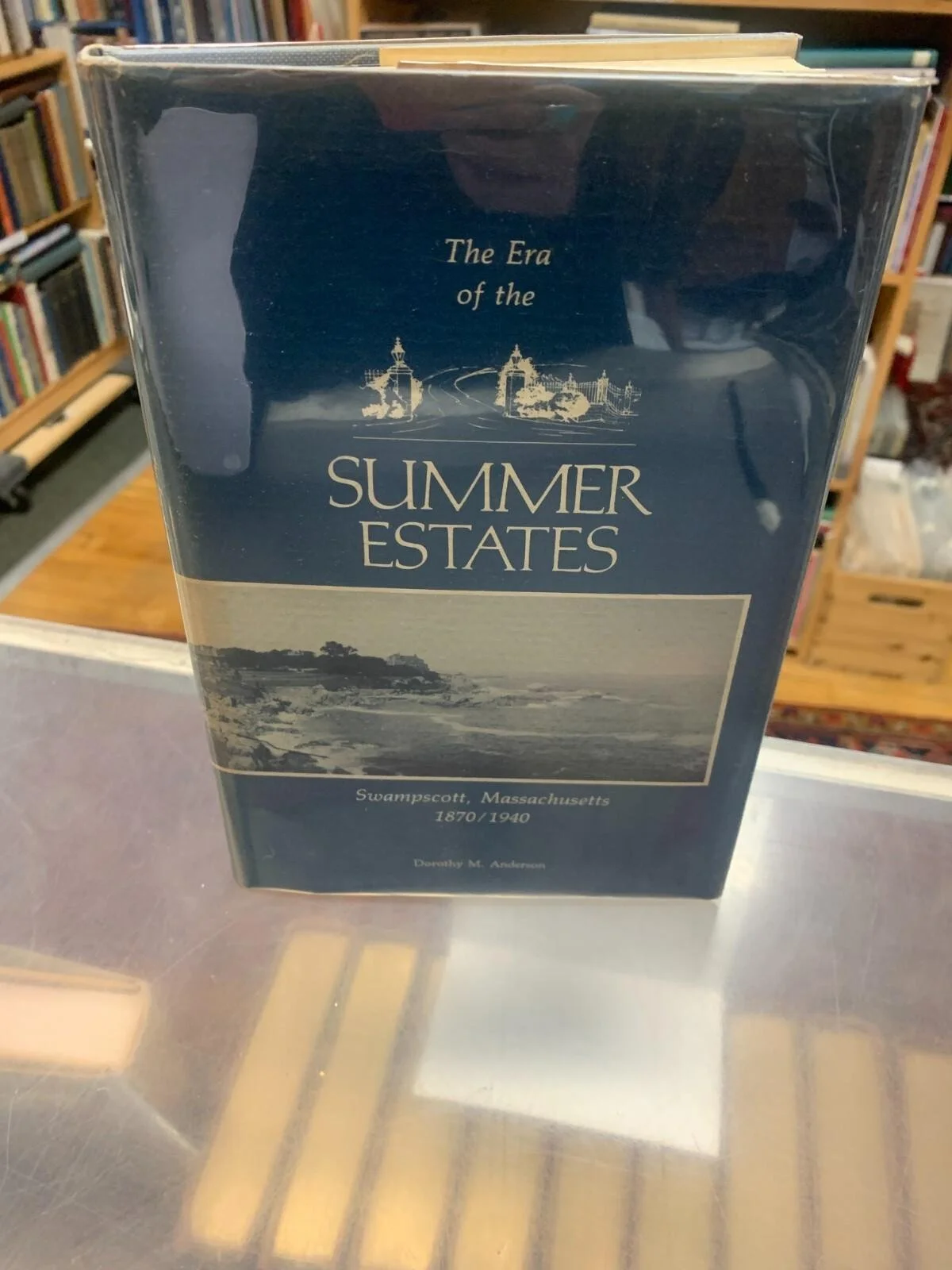In 1985 Dorothy M. Anderson, a local retired educator, published The Era of Summer Estates, Swampscott, Massachusetts 1870-1940, a brief history of this opulent chapter in the town’s history. The writer knew the period well having been raised on two of the largest estates where her father had been employed. In a well researched index she lists some 130 prominent residents and their professions during the time who “summered” in style in Swampscott. She also included the names of over sixty estates with descriptive monikers. Many impressive ones that still survive line the left hand side of Atlantic Avenue as one drives toward Marblehead. When built orginally, these homes had direct views across the marshes to the ocean.
According to Ms. Anderson, “Like the passage of time, the estate era slipped away gradually without fanfare.” Most original owners lived out their days on their lovely properties. For succeeding generations, the appeal of a full season by the sea began to fade. The automobile had provided a wider range of venues for summer fun. Few young women saw domestic service as an attractive calling. Many young men entered the armed services, then went to work in industries (like the General Electric Co. in nearby Lynn) that offered fewer hours and more benefits. The passing of the career gardeners “ruined the estates” according to some observers. The new breed of “landscapers” with all their mechanized equipment did not possess the same knowledge of choice plantings, “the hand trimmed shrubbery, and the perfect edging” once demanded by the career gardeners.
By the third generation, most heirs to the summer estates had to sell off “the old place” which was then divided into house lots. For example, in the 1930s one expanse on the Preston Phillips Avenue garden area required a 10,000 square foot lot on which a house would be build for a minimum of $10,000. No multiple family dwellings were allowed. On the whole these arrangements “reflected underlying integrity in the effort to adjust to changing times.”
-Historic Ipswich/Helen Breen
In 1985 Dorothy M. Anderson, a local retired educator, published The Era of Summer Estates, Swampscott, Massachusetts 1870-1940, a brief history of this opulent chapter in the town’s history. The writer knew the period well having been raised on two of the largest estates where her father had been employed. In a well researched index she lists some 130 prominent residents and their professions during the time who “summered” in style in Swampscott. She also included the names of over sixty estates with descriptive monikers. Many impressive ones that still survive line the left hand side of Atlantic Avenue as one drives toward Marblehead. When built orginally, these homes had direct views across the marshes to the ocean.
According to Ms. Anderson, “Like the passage of time, the estate era slipped away gradually without fanfare.” Most original owners lived out their days on their lovely properties. For succeeding generations, the appeal of a full season by the sea began to fade. The automobile had provided a wider range of venues for summer fun. Few young women saw domestic service as an attractive calling. Many young men entered the armed services, then went to work in industries (like the General Electric Co. in nearby Lynn) that offered fewer hours and more benefits. The passing of the career gardeners “ruined the estates” according to some observers. The new breed of “landscapers” with all their mechanized equipment did not possess the same knowledge of choice plantings, “the hand trimmed shrubbery, and the perfect edging” once demanded by the career gardeners.
By the third generation, most heirs to the summer estates had to sell off “the old place” which was then divided into house lots. For example, in the 1930s one expanse on the Preston Phillips Avenue garden area required a 10,000 square foot lot on which a house would be build for a minimum of $10,000. No multiple family dwellings were allowed. On the whole these arrangements “reflected underlying integrity in the effort to adjust to changing times.”
-Historic Ipswich/Helen Breen
 Image 1 of 7
Image 1 of 7

 Image 2 of 7
Image 2 of 7

 Image 3 of 7
Image 3 of 7

 Image 4 of 7
Image 4 of 7

 Image 5 of 7
Image 5 of 7

 Image 6 of 7
Image 6 of 7

 Image 7 of 7
Image 7 of 7








